Bunjil Ngalingu
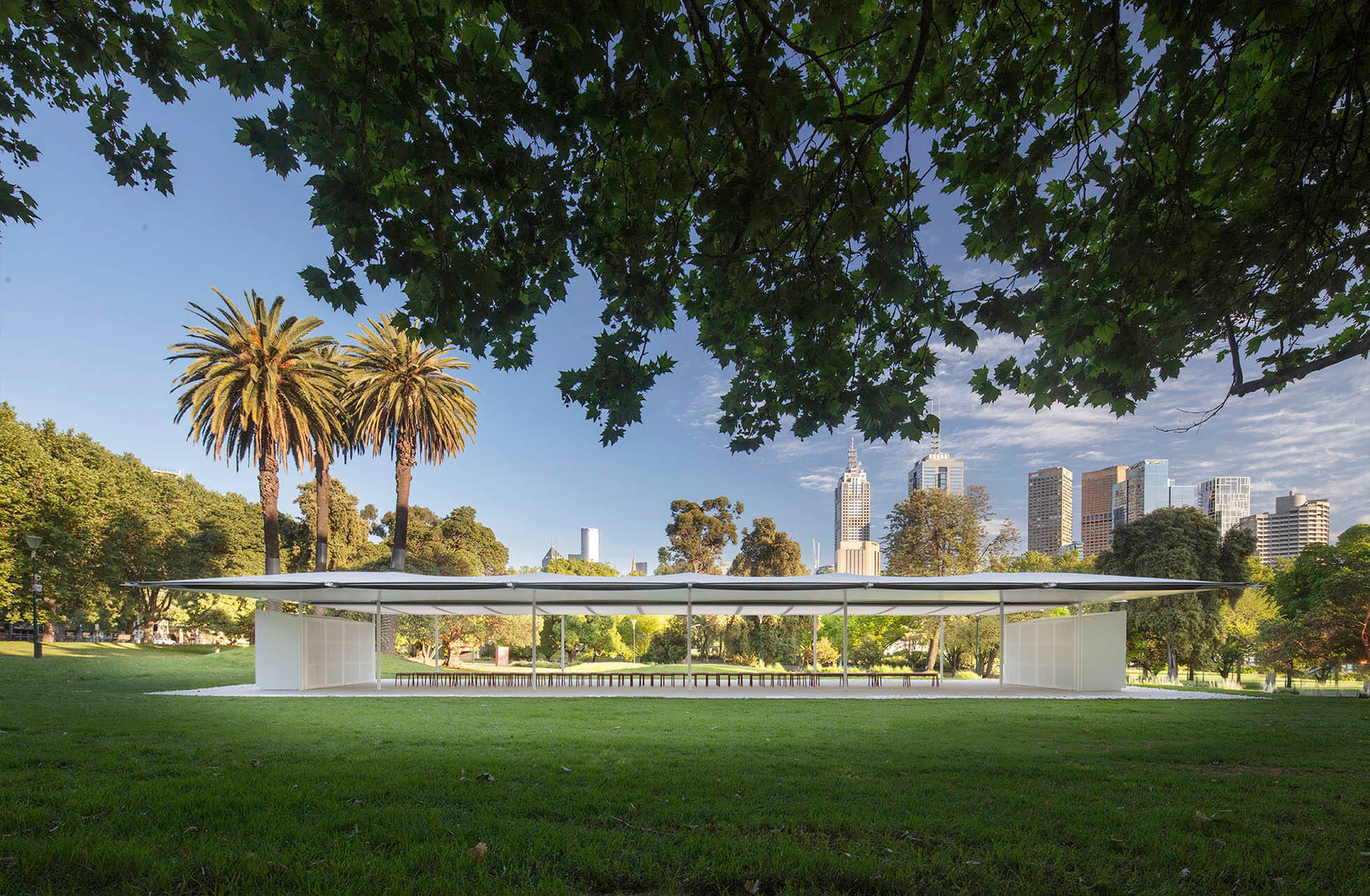
John Gollings
Architect:
Glenn Murcutt
Original performance:
14 November 2019
The MPavilion
Glenn Murcutt has said he began designing his MPavilion over thirty years ago—in Mexico. A memory from early in his career, flying by light plane to visit the ancient Mayan Yaxchilán ruins. Murcutt recalls:
“In the high humidity of the tropical climate we laid out a tablecloth on the ground, establishing ‘place’. After lunch, I put my rucksack against the aircraft’s undercarriage and laid down, and there above me was the beautiful wing, lined with aircraft fabric—which led me to the MPavilion’s roof—with the tablecloth as my place, together with my view the Yaxchilán, and the surrounding forest.”
In that memory of taking improvised shelter from the sun, Murcutt recognised all the qualities he wanted his MPavilion to feature. Like an aircraft wing, Murcutt’s pavilion took the form of a long, white, suspended roof that offered shade, but was open to the weather. Constructed of special fabric stretched over a lightweight frame, it mimicked the technology used in early aircraft wings. Murcutt replaced the tablecloth of his memory with a concrete slab, to define a place for people to gather.
At the time, Murcutt had only designed buildings within Australia. His pavilion furthered a longstanding interest in structures that make efficient use of site and climatic conditions that relate to the Australian landscape.
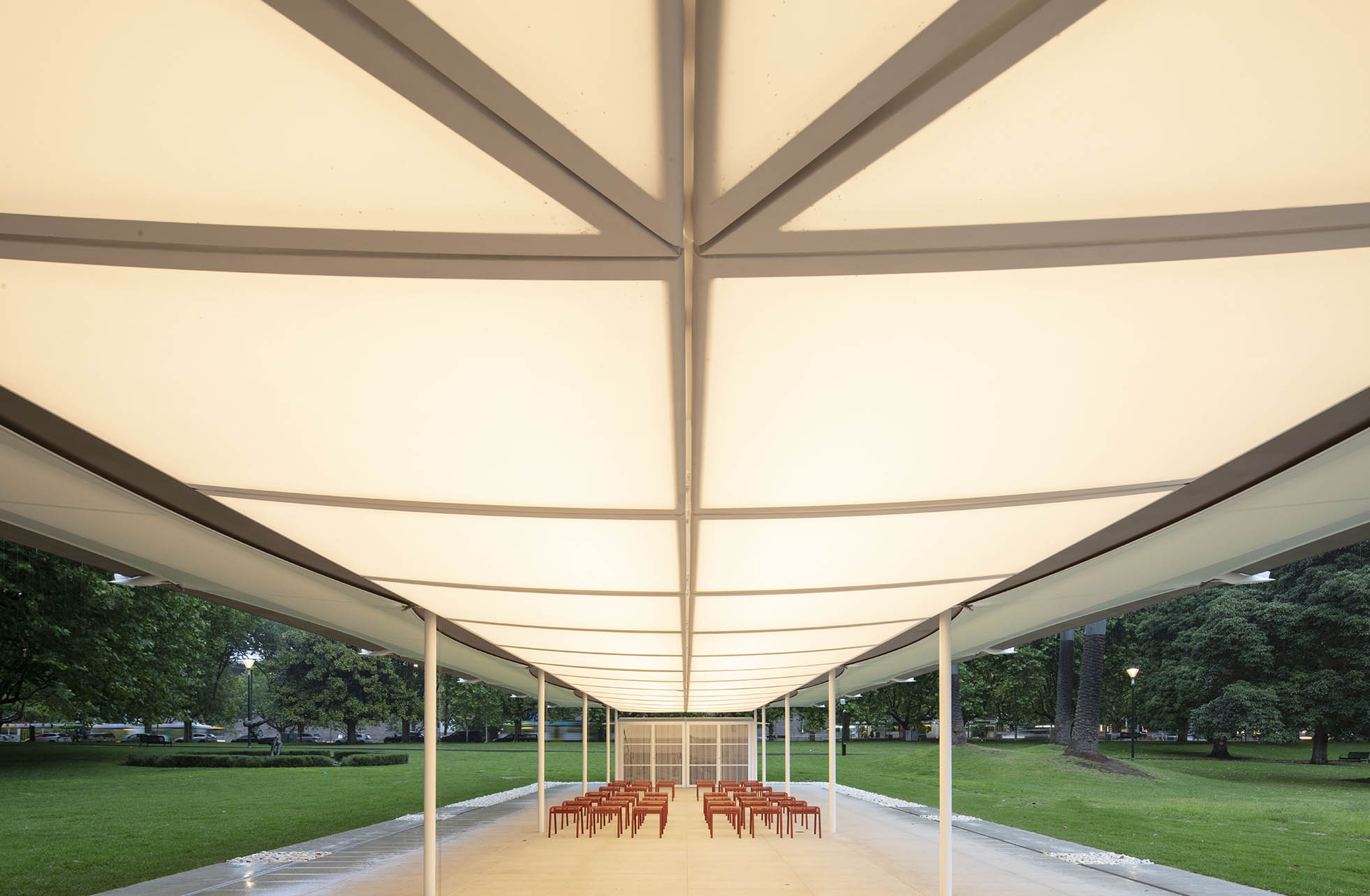
The Composition
When the sixth composition Bunjil Ngalingu was created, Deborah realised that the series has been of immense value to her process as a composer. “Each year the task of creating a response to the architect’s vision requires time and thought as I comprehend the way each pavilion interacts with the space and how it reflects past, present and future engagement with the land of the Yallukit Willam.”
Deborah’s relationship with Aunty Carolyn and the Boon Wurrung language deepened, broadened and strengthened over the years and offered an opportunity to reflect on the process to date. She noted that “the songs play an important role in my experience as a composer working almost exclusively with traditional languages and texts.”
For this opening ceremony Deborah departed from choral work, creating instead a delicate quartet for two sopranos, cello and piano. Bunjil Ngalingu speaks of the return of Bunjil—the creator symbolising renewal. Joining Deborah for this performance was Torres Strait Island soprano Jessica Hitchcock, cellist Katherine Philip and pianist Toni Lalich OAM.
In addition to the opening ceremony, Deborah returned to conduct the Dhungala Children’s Choir. The choir presented a concert of songs from the Choral Connection Song Book (Cheetham and Hitchcock), a collection that features the experiences and languages of Aboriginal Children from around Australia.
Words by Susie Anderson
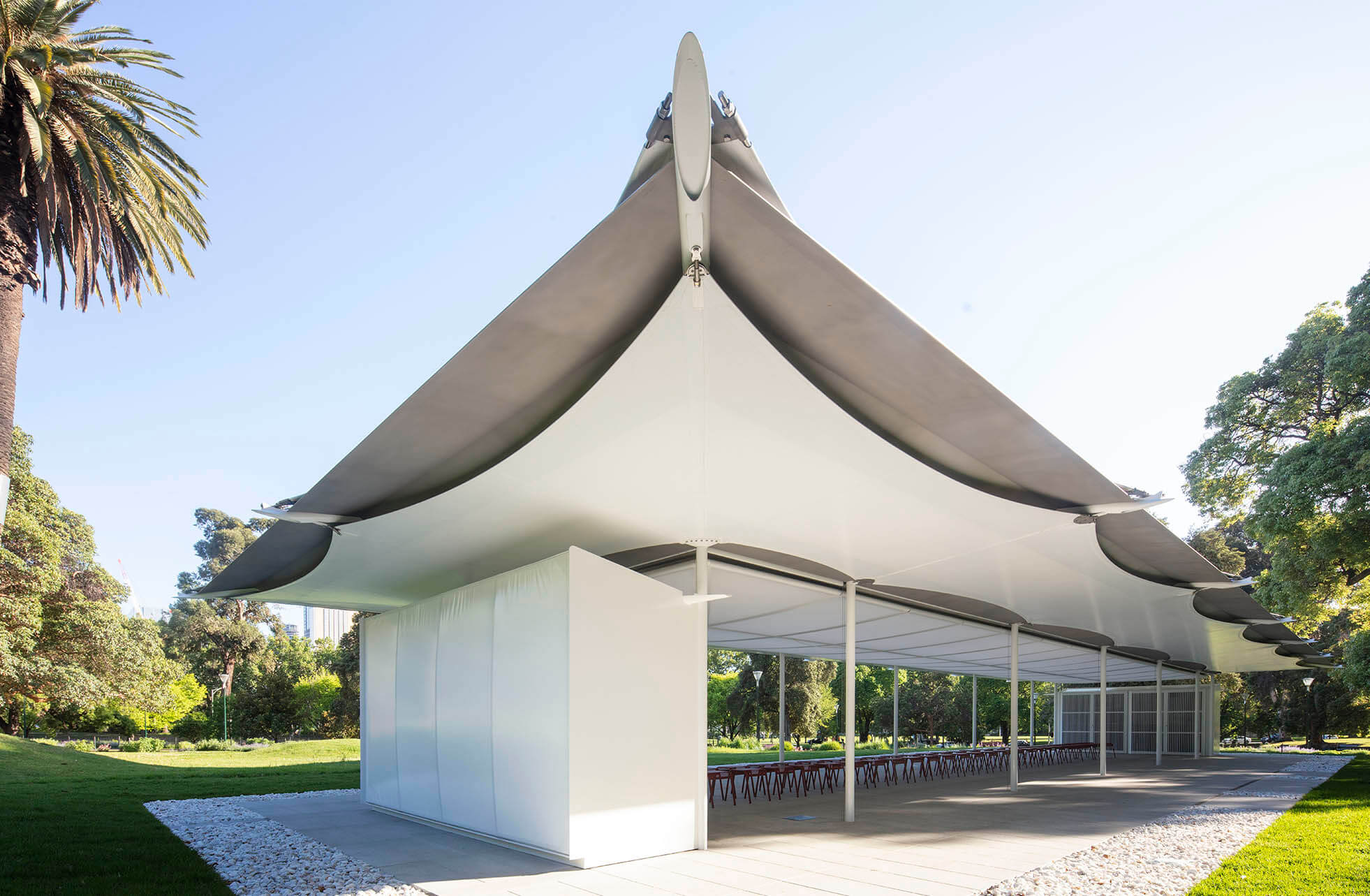
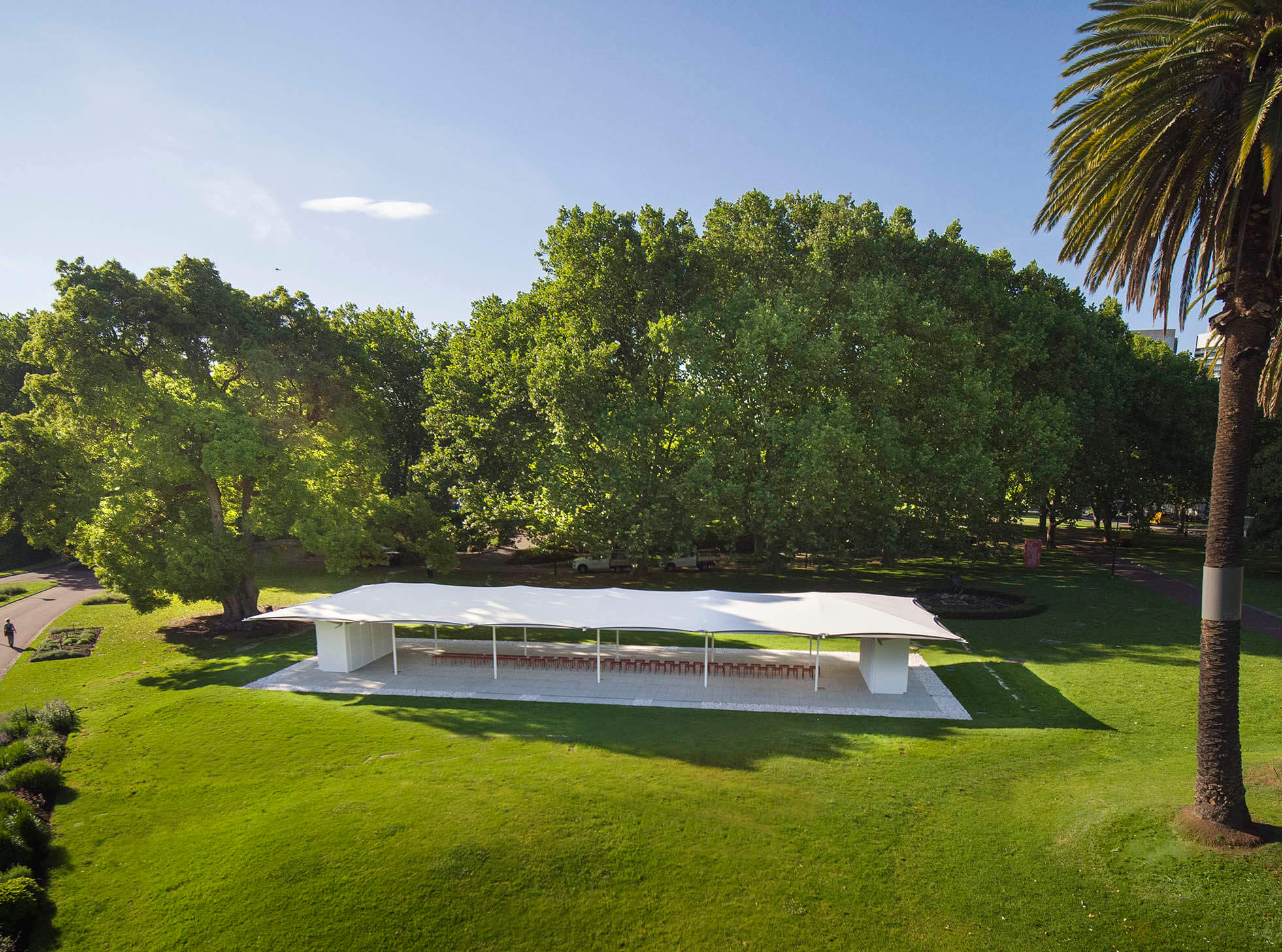
Compositional response
For almost half of its existence, the Short Black Opera team has consisted of three core members; my partner in music and life, Toni Lalich OAM, myself, and Torres Strait Island singer/songwriter, Jessica Hitchcock. 2019 was to mark Jess’s final year in her part-time role with SBO for, in 2020, she would unleash her considerable talent on the world of independent music festivals.
To mark this rite of passage I decided that I would compose a trio for the SBO team, and so Bundjil Ngalingu came to be. Very early in the composition process I knew I wanted to include cello and so the trio became a quartet. For the first time I also included a significant amount of English text to paint the picture of the traditional food source of the Boon Wurrung—the yam daisy, or Murnong. Once again Bundjil returns to guide us over the flowing waters of the golden fields of Murnong.
Thanks
This project was made possible thanks to the generosity of our partners and supporters.
With thanks to N’arweet Professor Carolyn Briggs AM PhD
Composer
Deborah Cheetham AO
Conductor
Aaron Wyatt
Naomi Milgrom AC





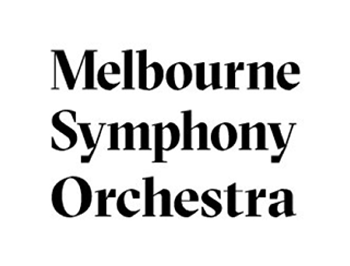

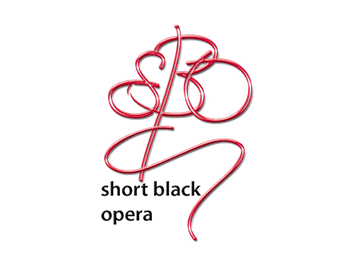
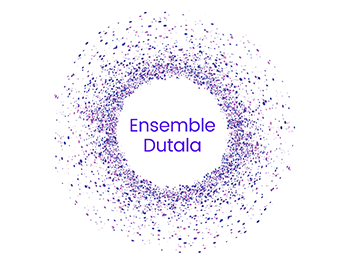
Dhungala Children’s Choir

Michel Lawrence
videographer
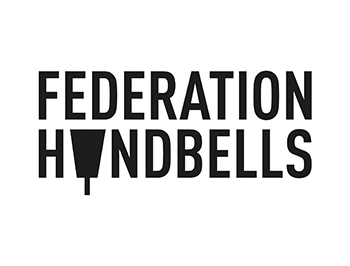
Deborah Cheetham AO
Toni Lalich OAM
Shauntai Batzke
Jessica Hitchcock
Aaron Wyatt
Cello Rohan de Korte
Hamish Upton and Zela Papageorgiou
Federation Bells (with thanks to Museums Victoria)
Susie Anderson
MPavilion Team
Sam Redston
Jen Zielinska
Piera Maclean
Molly Braddon
Claire Curnow
Gabriela Holland
Visit MPavilion.org








